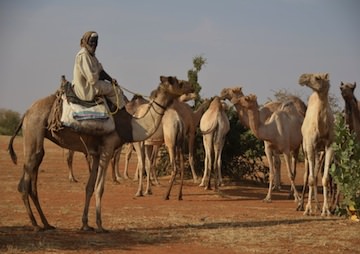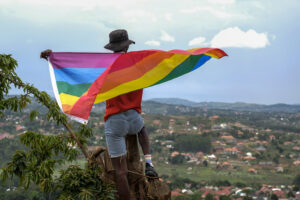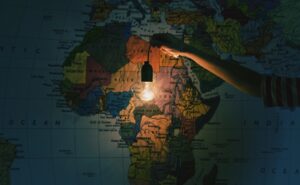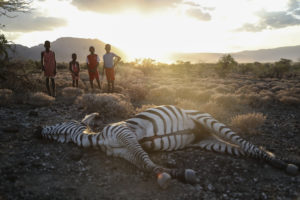Climate Renews Famine Risk to Africa’s Sahel
With population increasing and food demand far outstripping supply, the Sahel is vulnerable to a new humanitarian crisis -- and researchers warn that rising temperatures will make matters only worse.
By Alex Kirby, Climate News Network
Lack of water is a real concern for people in rural Sahelian areas such as North Kordofan, Sudan. Photo by Hakim Abdi/Lund University
This piece first appeared at Climate News Network.
LONDON — The Sahel, the arid belt of land that stretches from the Atlantic to the Red Sea and separates the Sahara desert from the African savanna, is no stranger to drought and famine.
Now scientists in Sweden say the Sahel faces another humanitarian crisis even than in the recent past — with the changing climate partly responsible.
Writing in the journal Environmental Research Letters, the researchers from Lund University say people in the Sahel need more food, animal feed and fuel every year. But demand, which has more than doubled over a recent 10-year period, is growing much faster than supply.
Fewer resources
Data from 22 countries shows the result: fewer resources per capita and a continued risk of famine in areas with low primary production — that is, the availability of carbon in the form of plant material for consumption as food, fuel and feed.
Human numbers are part of the reason. Between 2000 and 2010, the population of the Sahel grew from 367 million to 471 million people — an annual rise of 2.2% over the decade.
But crop production remained essentially unchanged, so the margin between supply and demand for primary production is shrinking every year, while the Sahel’s population is forecast to total nearly a billion people by 2050.

- Children’s graves at a Kenyan refugee camp during the 2011 famine
Image: Andy Hall/Oxfam via Wikimedia Commons
Some studies suggest that modern plant strains can withstand the effects of drought better than traditional cultivars, although this was not a focus of the Lund team.
They were mainly concerned with the staple crops grown regionally — such as sorghum and millet, which are used as food for people, with the residues used as fodder for livestock ? and with the dry woodlands that provide fuel.
They used remote analysis and satellite images to calculate annual crop production in the 22 countries they studied, and compared the figures with data on population growth and consumption of food, animal feed and fuel. This relationship helps to measure a region’s vulnerability.
The study shows that 19% of the Sahel’s total primary production in 2000 was consumed. Ten years later, consumption had increased to 41%.
Reduced harvest
It says several forecasts suggest that harvests will be reduced as a result of the higher air temperatures the region is now experiencing, even though climate change is predicted to result in the Sahel receiving more rain in future.
So, the researchers say, climate change can only increase the vulnerability of the Sahel.
Asked by the Climate News Network whether higher air temperatures alone were likely to cancel the gains from increased rainfall, one of the study’s authors, Hakim Abdi, a doctoral student in physical geography and ecosystem science at Lund, said: “The short answer is yes. Studies indicate that higher temperatures offset both increased rainfall and CO2 fertilisation.
“Additionally, a recent study found that increase in future rainfall in the Sahel, a region where the soil generally receives little nutrient input and is over-exploited, causes nutrient leaching, and hence induces nitrogen stress.
“When we were in our study site in North Kordofan in Sudan, the most common complaint we received from the villages we visited was the lack of water.
“I think that if a drought occurs with an impact that matches or exceeds the ones in 1972/73 or 1982/83, we will see serious consequences — worse impacts than past ones.”
Your support matters…Independent journalism is under threat and overshadowed by heavily funded mainstream media.
You can help level the playing field. Become a member.
Your tax-deductible contribution keeps us digging beneath the headlines to give you thought-provoking, investigative reporting and analysis that unearths what's really happening- without compromise.
Give today to support our courageous, independent journalists.






You need to be a supporter to comment.
There are currently no responses to this article.
Be the first to respond.